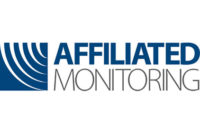The Telephone Consumer Protection Act of 1991 (TCPA) restricts telephone solicitations (i.e., telemarketing) and the use of automated telephone equipment. The TCPA also limits the use of automatic dialing systems, artificial or prerecorded voice messages, SMS text messages, and fax machines and specifies several technical requirements for fax machines, autodialers, and voice messaging systems — principally with provisions requiring identification and contact information of the entity using the device to be contained in the message.
While meant to limit solicitors, monitoring companies are swept under its restrictions based on the industry’s need to call subscribers or agents of subscribers. The robocall issue is by far the greatest complaint to the FCC and Congress.
Unless the recipient has given prior express consent, the TCPA and Federal Communications Commission (FCC) rules under the TCPA requires that solicitors maintain a company-specific “do-not-call” (DNC) list of consumers who asked not to be called. The DNC request must be honored for five years.
The battleground for the monitoring industry concerns the definition of an “autodialer” and who is a “called party.”
With a recent Ninth Circuit opinion regarding the definition of “autodialers,” and a patchwork of legal requirements across various jurisdictions, the result will negatively impact competition and the ability of alarm monitoring companies to communicate with and provide alarm services to consumers. To that end, the Alarm Industry Communications Committee (AICC), on behalf of the monitoring industry, continues to support the adoption of a narrow interpretation of the definition of “autodialers.”
Prior to the Ninth Circuit’s decision, the Third Circuit had interpreted the definition of “autodialers” narrowly, holding that a device is not an “auto-dialer” unless it can generate random or sequential telephone numbers. The Ninth Circuit expressly rejected the Third Circuit’s interpretation. Instead, the Ninth Circuit interpreted the definition of “autodialers” broadly, finding that equipment meets the definition of “autodialers” if it can store “telephone numbers to be called, whether or not those numbers have been generated by a random or sequential number generator.” As a result, companies whose activities fall under the TCPA are forced to operate with two irreconcilably different definitions of what type of equipment triggers TCPA liability in the first place, depending on where they offer service and/or where they are principally located.
AICC also urged the FCC to adopt a strict construction of what constitutes an autodialer, and follow the language in the TCPA, whereby only calls made using actual “autodialer” capabilities are subject to the TCPA’s restrictions.
AICC further argued that “called party” should mean the person intended to receive the call. For example, a monitoring company would be able to use an autodialer to contact a wireless device when it has received permission to do so from its customer, even if the number has been reassigned to someone else. Obviously, the monitoring company would correct its database accordingly.
A broad interpretation of autodialer would hinder the ability of alarm monitoring companies to make these calls and/or increase the liability exposure of companies.


